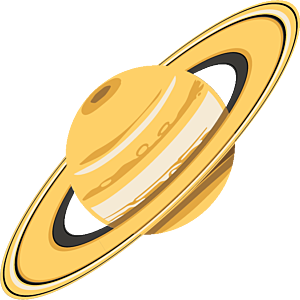The Downlink • Aug 27, 2021
Dunes and doppelgangers
You love space, now take action
This weekly newsletter is your toolkit to learn more about space, share information with your friends and family, and take direct action to support exploration. Anyone can subscribe at planetary.org/connect to receive it as a weekly email.
Mission Briefings


The James Webb Space Telescope is getting ready to ship to its launch site. NASA reports that testing of the giant observatory has wrapped up, and technicians will now prepare it for a journey through the Panama Canal to Kourou, French Guiana. An Ariane 5 rocket will blast it into space as early as November, though a final date has not yet been set. Pictured: The space telescope after completing testing. Image credit: NASA/Chris Gunn.

NASA is trying to figure out how to make plants a little more relaxed in space. The agency says that one experiment on SpaceX’s 23rd resupply mission to the International Space Station will help researchers understand how plants respond to the stress of microgravity. The experiment, called Advanced Plant Experiment-08 (APEX-08), will grow a small flowering plant called Arabidopsis thaliana on board the ISS. Scientists will apply any learnings toward helping astronauts grow food on future long duration missions.

Perseverance has made it to a Martian “Citadelle.” Here, the rover will make a second attempt at collecting a rock sample. The first rock Perseverance tried to sample was too crumbly and fell apart. We still don’t know the outcome of Perserverance’s second attempt, but in the meantime, you can follow the rover’s movements on this map from NASA.

Blue Origin launched several science experiments to space on board its New Shepard capsule. The Aug. 26 flight carried experiments from Carthage College, the Southwest Research Institute, NASA, and the University of Florida. Additionally, New Shepard ferried thousands of postcards from students involved in Blue Origin’s Club for the Future — the company’s STEM education nonprofit.
From The Planetary Society


Are there other worlds out there like our own? Every year we discover more exoplanets (worlds orbiting other stars). Some of them share characteristics with Earth and can give us a new perspective on our home world. In the newest article from Planetary Society editor Rae Paoletta, we unpack the definition of an Earth-like world and take a look at some of the most intriguing ones out there. Pictured: An artist’s impression of the Earth-like exoplanet Kepler-186f. Image credit: NASA et al.

It’s not very Earth-like, but Europa is no less intriguing. Jupiter’s icy moon has a vast subsurface water ocean that could possibly be home to life. NASA’s Europa Clipper mission will send a powerful orbiter to investigate. Mission system manager L. Alberto (Al) Cangahuala joins this week’s Planetary Radio to talk about the great strides being made toward a planned 2024 launch and the challenges ahead.

When looking for life on other worlds, how do we make sure we don’t bring it with us? Microorganisms are phenomenally resilient beings that can sometimes even survive in the vacuum of space. Making sure they don’t hitch a ride on spacecraft traveling to Mars or other worlds is crucial, especially for missions that are trying to detect signs of life beyond Earth. Planetary protection is the global, coordinated effort to keep Earthly microbes from spreading beyond Earth, and to ensure that any life that does exist on other worlds doesn’t infect us when we bring back samples.

Getting to Mars is no easy feat. That’s why space exploration experts from around the world come together at events like the Humans to Mars Summit taking place virtually Sept. 13-15, 2021. You can join this virtual conference for free to hear from these experts over three jam-packed days of panels, talks and technical sessions about the many challenges and opportunities that come with Mars exploration. Our own Planetary Radio host Mat Kaplan will moderate three sessions. Register today!
What's Up

After sunset look to the west for Venus, shining bright low in the sky. Turn to the east to find bright Jupiter with Saturn to its upper right. Learn more at planetary.org/night-sky.
Place your bids!

An online auction is happening right now in support of The Planetary Society’s LightSail 2 extended mission. You can bid on special limited-edition LightSail swag and unique virtual experiences like a Zoom call with our CEO Bill Nye. Visit our auction site today to check out all the cool packages. Every bid helps us keep LightSail 2 sailing on sunlight!
Plus, don’t forget to join the virtual premiere of Sailing the Light on Saturday, August 28 at 1 p.m. ET (17:00 UTC) on YouTube Live. Join other Planetary Society members around the world to watch the documentary that tells the story of this amazing crowdfunded mission, and then stick around for the Q&A with Bill Nye and other mission team members.


 Explore Worlds
Explore Worlds Find Life
Find Life Defend Earth
Defend Earth




